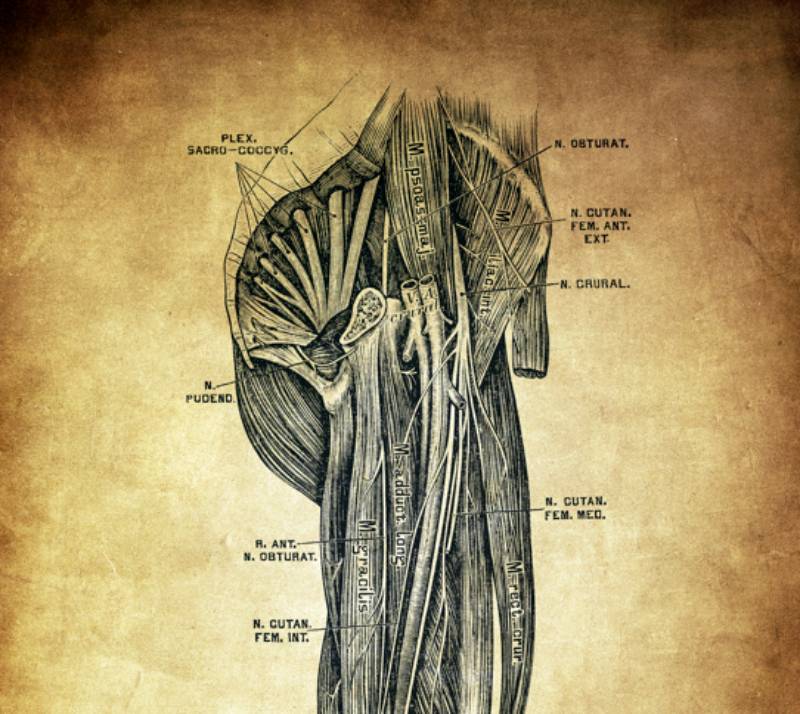Femoral nerve block (FNB) is valuable in contemporary pain management strategies for various lower limb procedures and acute conditions. It has been commonly used to provide anesthesia, alongside general anesthesia, in surgeries involving the hip, femur, and knee. However, disadvantages of the femoral nerve block have shifted interest towards alternatives.
In the realm of lower limb surgeries, FNB holds a prominent role in perioperative pain management protocols. It is routinely utilized in knee arthroscopy, anterior cruciate ligament (ACL) reconstruction, hip and femur surgeries, and foot and ankle procedures. By precisely targeting the sensory innervation of the anterior thigh and knee joint, FNB effectively mitigates postoperative pain, facilitating early mobilization and rehabilitation while reducing the reliance on systemic opioids (2). Furthermore, FNB serves as an invaluable adjunct in fracture reduction procedures, particularly in cases of femoral shaft fractures or hip fractures. By providing profound analgesia to the affected region, FNB facilitates reduction maneuvers, allowing for successful realignment with minimal patient discomfort and muscle spasm. This not only enhances procedural success rates but also contributes to improved patient outcomes and satisfaction (2).
The utility of FNB extends beyond elective surgeries to acute settings, such as the emergency department, where rapid pain relief is paramount. In the context of lower limb injuries or fractures, FNB offers rapid and efficient analgesia, facilitating evaluation and treatment (3).
The advantages of FNB lie not only in its targeted analgesic effects but also in its contribution to enhanced recovery and reduced opioid consumption. By delivering localized anesthesia, nerve blocks minimize systemic drug exposure, thereby mitigating the risk of opioid-related adverse effects, including respiratory depression, nausea, and sedation. This is particularly pertinent in the context of contemporary opioid stewardship initiatives aimed at minimizing opioid overutilization and its associated complications (4).
However, it is essential to acknowledge the limitations of femoral nerve block, including incomplete coverage, potential motor weakness, and technical challenges associated with its administration, that may favor alternatives. While FNB effectively targets the anterior thigh and knee joint, it may not provide comprehensive analgesia for all aspects of lower limb surgery, necessitating adjunctive techniques or systemic analgesia in certain cases. Moreover, transient motor weakness or paresthesia of the quadriceps muscle may occur, impacting postoperative ambulation and mobility. In light of these considerations, alternative approaches to lower limb analgesia warrant exploration (5). Alternatives to femoral nerve block, such as sciatic nerve blocks, adductor canal blocks, and lumbar plexus blocks, offer distinct advantages and patterns of sensory and motor blockade. These alternatives provide healthcare providers with a versatile toolkit for tailoring pain management strategies to meet the unique needs of individual patients and surgical procedures (5).
Though this technique is a useful tool for anesthesia, potential impacts on quadriceps strength and thus ambulation are a significant drawback. Clinicians must be cognizant of its limitations and consider alternatives to the femoral nerve block when appropriate.
References
- Brown DL. Femoral Nerve Block. In: Hadzic A, ed. Hadzic’s Peripheral Nerve Blocks and Anatomy for Ultrasound-Guided Regional Anesthesia. 2nd ed. New York, NY: McGraw-Hill; 2011:117-136.
- Memtsoudis SG, Poeran J. Perioperative Pain Management in the Orthopedic Patient. In: Sinatra RS, Jahr JS, Watkins-Pitchford JM, eds. The Essence of Analgesia and Analgesics. 2nd ed. New York, NY: Cambridge University Press; 2018:201-210.
- Neal JM. Peripheral Nerve Blocks. In: Benzon HT, Raja SN, Liu SS, Fishman SM, Cohen SP, eds. Essentials of Pain Medicine. 4th ed. Philadelphia, PA: Elsevier; 2018:437-446.
- Sites BD, Beach ML, Chinn CD, et al. A Comparison of Three Methods for Ambulatory Femoral Nerve Blockade: A Dual-Center Randomized Equivalence Trial. Anesth Analg. 2009;109(2):472-479.
- Ilfeld BM. Continuous peripheral nerve blocks: a review of the published evidence. Anesth Analg. 2011;113(4):904-925.



